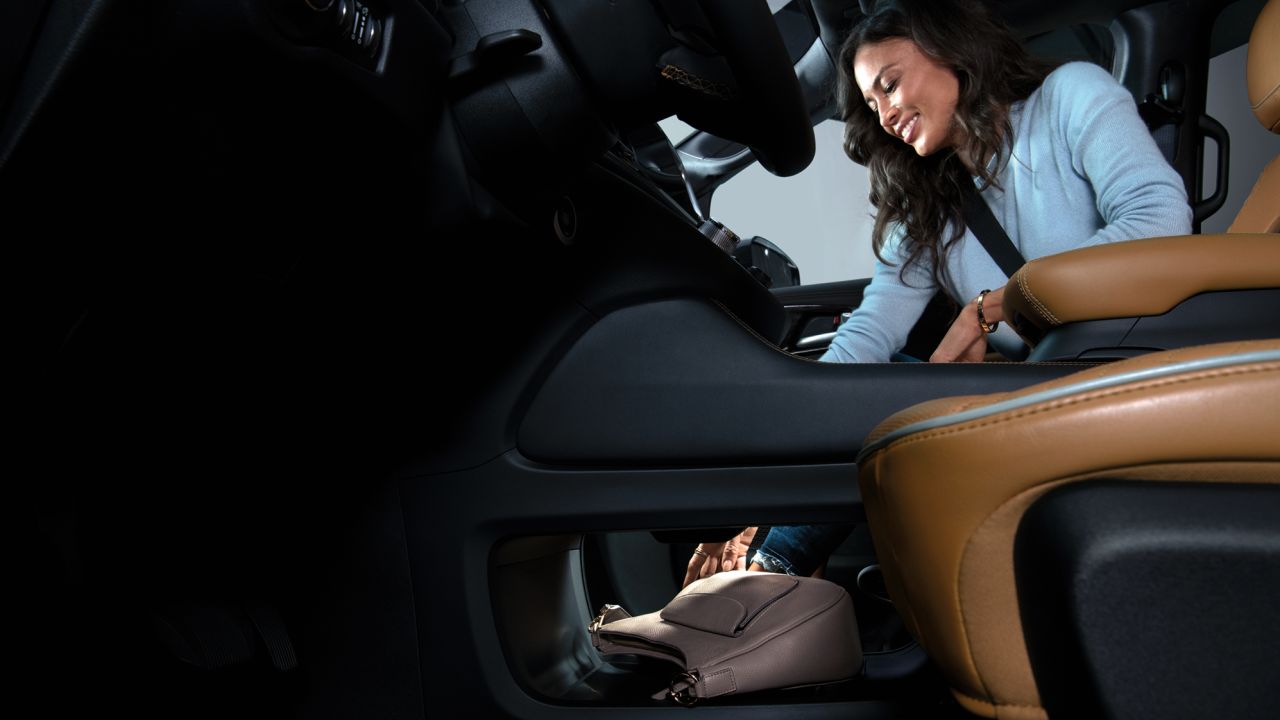When a woman gets in the driver’s seat of a car she often faces a challenge. Where to put her bag There’s just not a good place. There’s the passenger seat, if its empty, or the footwell in front of it or even on the back seat, if you don’t mind reaching all the way back there.
While there are holders for cups, keys and even cell phones, there’s rarely a good place to put a purse or handbag. It’s not only women who carry bags, of course, and not just purses, either. But purses contain things that need to be kept close at hand like a wallet, house keys and even the key for the vehicle itself. You don’t want to just toss it anyplace inside the car.
Automotive purse placement wasn’t always such a problem. It’s become an issue in recent decades as automakers have tried to balance competing needs for space, convenience and style.
At times automakers have made special, and sometimes clumsy, efforts to cater to female drivers. In the mid-1950s, for instance, Chrysler introduced a new model especially for women. The Dodge La Femme, as it was called, had seats with an embroidered rosebud pattern and “La Femme” badging in brushed gold, rather than plain chrome. It came with color-coordinated rain gear that fit into a special pouch behind the front seat. The car also came with a purse in rose-colored leather matching the car’s interior. There was another satchel on the back of the front seat to hold that pink purse. Nice, but not a very convenient location, since the driver would have to reach awkwardly around or even put the bag in before in the driver’s seat.

But the Dodge La Femme, like most American cars of the 1950s, had a front bench seat. Bench seats have a single long seat cushion stretching across the car. They allow three people to sit side-by-side up front.
With a bench seat, purse placement wasn’t a problem. If there was no one sitting in the center, which would have been most of the time, the purse could just go on the seat.
Alas, bench seats faded away. The alternative, bucket seats, were mostly in sports cars at first. Today we just call them “seats” because they’re in pretty much everything. They gave cars a sportier feel and made it easier to shift gears using a shifter on the floor rather than on the steering column.

The space between the seats usually has an awkward hump, though. A tunnel runs along the center of most vehicles to make room for the transmission, exhaust pipe and other things. To make that space more useful, automakers invented the center console. It usually includes a storage bin of some kind, often with a lid, cupholders and sometimes a phone holder. In modern cars, there are usually a couple of USB ports, too. There are a lot of competing needs to hold all the things drivers carry into the car.
“You want to be positioning those items with relatively ease, like, ‘Yeah, I’m throwing my wallet here, throwing my keys here,’” said Stellantis designer Ryan Nagode, “and some of this stuff is just ever changing.”
Cupholders have grown in size, for instance, to hold more generous take-out cups. With big vehicles, it’s less of a challenge designing space for a bag just because there is just so much room to work with. That’s why the Ram 1500, for instance, offers a huge center bin. it’s harder with smaller models.
General Motors designer Taryn Dyle noted that there are also cost issues to designing big storage areas besides just, literally, having the room.
“It’s usually more expensive, because you have to add more structure in targeted places to have a big open space,” she said.

In recent years, a new technology, the electronic gear selector, has become common, making it easier to carve out spaces for bags. Before, the gear selector, that lever with the letters P-R-N-D-L that drivers use to put the car in park, reverse or drive had to be mechanically connected to the transmission. An electronic gear selector does the same thing, but with electronic signals to the transmission, opening up all sorts of possibilities.
Some SUVs, like the Nissan Rogue and Volkswagen Atlas, have open spaces underneath the shifter. That opening wouldn’t be possible if the shifter had to be connected to the transmission. In Lincoln SUVs, gears are selected using a row of buttons on the lower dashboard instead of a lever. That design, also, opens up space in the center console for bags.
Things get even better with electric cars. Electric vehicles don’t need a bulky transmission with multiple gears at all, and they definitely don’t need an exhaust pipe.
“In an electrified [vehicle], we have the benefits of the flat battery, which gives us this new space inside the cabin,” said Volvo designer Lisa Reeves.

With no central tunnel, some EVs like the Hyundai Ioniq 6, simply have a very large space underneath the center console. At Volvo, designers got particularly creative. The EX30 EV has a center console with sections that slide, move and open to create spaces that can easily fit larger or smaller bags.
In the electric Cadillac Escalade IQ, designers took advantage of that space to create a large elegantly decorated opening perfect for a purse or bag. It’s underneath a portion of the center console that projects outward over it like a cliff ledge. It may seem like a small thing, but it was a priority.
“That was one of those projects where I fought for it, and everybody in the project rallied around,” Dyle said.
Read the full article here




